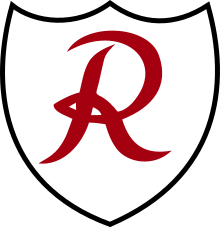| Jagdgeschwader 2 | |
|---|---|
 Unit insignia | |
| Active | 14 March 1936–1 May 1939 as Jagdgeschwader Richthofen, JG 132 and JG 131 1 May 1939–8 May 1945 as JG 2 |
| Country | |
| Branch | Luftwaffe |
| Type | Fighter Aircraft |
| Role | Air superiority Fighter bomber Surgical strike Fighter escort |
| Size | Air force wing |
| Patron | Manfred von Richthofen |
| Engagements | World War II |
| Commanders | |
| Notable commanders | Helmut Wick Walter Oesau |
| Insignia | |
| Cuff title | |
Jagdgeschwader 2 (JG 2) "Richthofen" was a German fighter wing during World War II. JG 2 operated the Messerschmitt Bf 109 and Focke-Wulf Fw 190 single-seat, single-engine interceptor aircraft.
Named after the famed World War I flying ace Manfred von Richthofen, the origins of the wing can be traced to 1934. Following the German invasion of Poland in September 1939 which began World War II, JG 2 served protecting the German border with France during the Phoney War. On 10 May 1940 it served in the Battle of Belgium and Battle of France. Thereafter it fought in the Battle of Britain and then remained on the English Channel front until September 1944. Elements of JG 2 fought in the latter stages of the North African Campaign, notably in the Battle of Tunisia in 1942 and 1943.
After the expulsion of German forces from France and Belgium following the Normandy landings, JG 2 served in the Defence of the Reich and fought on the Western Front, most notably at the Battle of the Bulge in the winter, 1944/45. JG 2 surrendered in May 1945.
Only three of JG 2's ten wartime Geschwaderkommodore survived World War II—four were killed while serving with JG 2, the highest fatality rate of any German fighter wing.[1] JG 2 claimed 2,700 Allied aircraft destroyed at the cost of 750+ pilots killed or missing.[2]